Global Finance brought together a group of key figures in the foreign exchange industry to discuss the dramatic growth of the market and its prospects for the future.
GLOBAL FINANCE: Is the euro ready to challenge the dollar as a reserve currency?
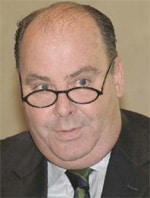 |
|
|
DAVID NICHOLS
, managing director, global markets, The Bank of New York: The euro will not replace the dollar as a reserve currency. The real question is the long-term viability of the euro itself. You have countries like Italy, which have a different fiscal agenda that makes it potentially difficult for them to adhere to the broad guidelines of the eurozone, and you have different political agendas of the new entrants to the EU that may or may not become participants in the euro. While the US currency has all of the characteristics required of a reserve currency-it’s a store of value and a medium of exchange, and it is freely convertible-it will remain the principal reserve currency.
PETER GARBER
, global strategist, Deutsche Bank: Technically, the euro is a reserve currency. If the dollar were to disappear tomorrow, it would be the principal reserve currency, but the dollar is not about to disappear. And if the euro did become the principal reserve currency, it would generate such pressure on the European economies that the inherent weaknesses in the euro would blow out all of the rivets from the boiler.
COURTNEY MCLAUGHLIN
, managing director, global markets solutions group, Credit Suisse: There is no decree that says that the dollar has to be a reserve currency within a free market. The euro already has challenged the dollar as a reserve currency. It is assumed that China, as well as some European countries as well, has moved away from some of its dollar reserves in favor of euro reserves. Smaller central banks that historically never held dollar reserves have been accumulating dollar reserves while other central banks may feel the need to diversify their holdings out of dollars perhaps because of monetary policy in the US which may cause the dollar to weaken.
managing director, global markets, The Bank of New York: The euro will not replace the dollar as a reserve currency. The real question is the long-term viability of the euro itself. You have countries like Italy, which have a different fiscal agenda that makes it potentially difficult for them to adhere to the broad guidelines of the eurozone, and you have different political agendas of the new entrants to the EU that may or may not become participants in the euro. While the US currency has all of the characteristics required of a reserve currency-it’s a store of value and a medium of exchange, and it is freely convertible-it will remain the principal reserve currency. global strategist, Deutsche Bank: Technically, the euro is a reserve currency. If the dollar were to disappear tomorrow, it would be the principal reserve currency, but the dollar is not about to disappear. And if the euro did become the principal reserve currency, it would generate such pressure on the European economies that the inherent weaknesses in the euro would blow out all of the rivets from the boiler. managing director, global markets solutions group, Credit Suisse: There is no decree that says that the dollar has to be a reserve currency within a free market. The euro already has challenged the dollar as a reserve currency. It is assumed that China, as well as some European countries as well, has moved away from some of its dollar reserves in favor of euro reserves. Smaller central banks that historically never held dollar reserves have been accumulating dollar reserves while other central banks may feel the need to diversify their holdings out of dollars perhaps because of monetary policy in the US which may cause the dollar to weaken.
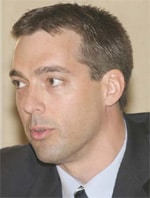 |
|
|
SEAN ALLINSON
, managing director, global currency trading, TD Securities: Being the third-largest economic part of the world, Europe is going to play a major role going forward. But the big thing working against Europe right now is demographics-the aging population. There is no way I can see the European countries being a force of growth, and so it is hard to imagine the euro challenging the dollar as the reserve currency of choice.
NICHOLS
: There is the opportunity for multiple reserve currencies. Major central banks are putting new money or incremental investments into non-dollar denominations. And in a sense there is an orderly diversification of reserves under way right now, but it is not of a magnitude that would have the effect of undermining the value of the US dollar or its role as the principal reserve currency.
ANU JAYANTI
, global head of foreign exchange sales, Citigroup: I don’t think the euro is ready to become the reserve currency of choice. There has been a gain in euro reserves across the globe, but it has come at the expense of currencies other than the dollar. The other piece of the puzzle is that commodity prices are all denominated in dollars so big commodity importers would have to take on the additional currency risk of managing a sizable amount of euros. From a reserve management perspective it is hard to tell what the currency composition of oil producers’ reserves is. It is conceivable that the investment portfolio side of those flows is much more focused on trading in euro and other currencies than the dollar. The other big reserve banks seem to be diversifying new reserves while maintaining the bulk of older reserves in the dollar.
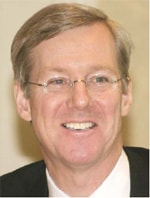 |
|
|
JOHN ATCHUE
, manager of North American FX sales, State Street: The reserve situation is dynamic. Yes, the euro has increased, but the yen decreased. The challenge for the euro will be to continue to have strong fiscal policies to provide the store of value. If the EU can’t do that, the euro’s reserve status can deteriorate just as the yen’s has recently.
ED HULINA
, head of foreign exchange distribution, Americas, UBS: As long as there are global imbalances, there will be reserve accumulation. The dollar will remain the primary reserve currency, but the percentage will probably shift over time to be less concentrated in dollars and more concentrated not just in euros but also in sterling, Australian and Canadian dollars and perhaps other currencies. We also should be asking what will be the effect on currency markets as global imbalances continue. What we have seen in the past several months in the value of the dollar has a lot to do with this question. If the United States is going to continue to attract capital inflows to fund its global imbalances, the value of the dollar likely has to fall. It will be interesting to see whether the value of the dollar will decline rapidly or gradually.
MCLAUGHLIN
: Part of the reason that reserves have grown so fast is that some Asian currencies have not been allowed to appreciate in line with their economic strength and as a result have needed to buy dollars. As a consequence, their reserves have grown causing a plethora of dollar reserves The market is causing a gradual resolution of these imbalances by the central banks changing their reserve mix. If they do anything that interferes with the market mechanism, such as imposing trade tariffs, foreign exchange taxes or capital controls the imbalances will be resolved rapidly.

|
|
|
GARBER
: We believe the imbalances will be gradually resolved. I believe there will be a very gradual depreciation of the dollar, basically managed by the Asians, so there won’t be any great discontinuity.
NICHOLS: The process is being very carefully managed by the G-7, the G-20 and the central banks involved. There are three broad elements of universal agreement: improved fiscal responsibility in the United States, growth initiatives in Japan and Europe to spur demand for exports from the US, and more flexibility in Asian exchange rates.
GF
: How will banks continue to make enough profit to remain in the FX business?
HULINA
: The sales side of the foreign exchange business is very, very competitive. There are dozens of banks all more or less providing similar services-if differing service levels. It is becoming harder for banks to remain profitable in this business, and there are really two ways of doing that. One is to have a large-scale operation so that the marginal cost of adding more clients and more flow is very small. The other is to be a niche player. You could still be very large, but you could focus on one client segment or one region or one type of product.
JAYANTI
: Many customers that are demanding tight pricing tend to use e-portals. The key is making sure they get an e-solution that works for them. That way you can service a huge number of clients who prioritize pricing and liquidity. For the other clients who are asking for bespoke service, you need to offer access to research and insight. Clients do acknowledge value-added.
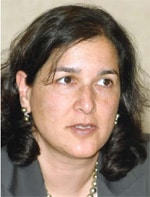 |
|
|
JOHN COOLEY
: chief financial officer, FXall: Electronic trading has significantly reduced the processing costs for FX. But the reduction in cost is much more significant than just the effect on the back-office charges. High-end technology is now available that makes it possible for banks of all sizes to make faster, tighter prices and deliver a high level of service and control without huge investments in technology. Technology is leveling the playing field between the wholesale banks that have the big IT budgets and smaller banks that are focused on specific regions or client segments. Banks can now white label customer-facing front-end systems that offer a tremendous amount of functionality that are extremely sophisticated but not expensive to procure or to maintain. Secondly, cost effective pricing tools are now available that enable smaller banks to deliver fast, customized prices without investing in a fancy rate engine. Thirdly, banks can also white label liquidity either from a wholesale bank or from a multi-bank platform such as FXall, enabling it to provide trading in currencies or at times of the day when they would not normally trade.
ATCHUE
: Our access to liquidity is certainly enhanced by the various electronic tools available to us. The cost for us to be involved in that part of the business is not large. The more important question is not the cost of the price, but whether you should buy it or sell a currency. If you can provide those services to provide alpha for your clients, then you can share in the upside potential of the client, and that is a far more interesting proposition than just looking at the price.
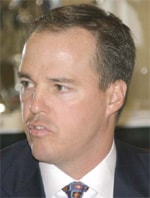 |
|
|
NICHOLS
: There are different strategies for making money in foreign exchange: You can make your money either in the sales margin or the mark-up on customer business, or by having a tremendous amount of volume and capturing the bid-offer spread between uncorrelated customer flows, or by putting your own capital at risk in proprietary trading. With regard to niche players, the question is, How does the niche player define the added value to justify continuing to earn that sales margin in an environment where the buy side can readily access liquidity at very low cost?
HULINA
: Price shows up seventh or eighth on the list of what is important to end users. There is a whole host of things that factor into the trading decision, including post-trade service in terms of clearing and settling trades efficiently, as well as the fact that FX is often tied up in many other asset-class decisions. It is the bundling of all the other services around it.
GF
: Are banks mispricing liquidity?
MCLAUGHLIN
: Over the past few years, banks have become much keener on pricing the cost of credit into foreign exchange transactions as they go out over time. With the advent of credit derivatives, that has been an easier process to employ. To a certain degree, banks were mispricing liquidity to certain clients but now are smarter on the risk side of the equation.
GF
: What will happen to volumes in the foreign exchange markets?
NICHOLS
: There have been two clear sources of growth. One is the emergence of the alternative investment management industry that uses foreign exchange as an asset class and wants to manage it for gain. Second, the traditional long-only mutual funds and pension plans have begun to pursue higher returns through diversifying into global markets. You have seen a shift of asset allocation toward global assets and in particular toward emerging market assets, and that has been very good for the sell side of the foreign exchange industry.
JAYANTI
: Also, there has been huge growth-probably quintuple in five years-in the size of assets under management at systematic trading funds that are trading FX as an asset class. Those accounts using leverage are turning over unbelievable amounts of foreign exchange per annum.
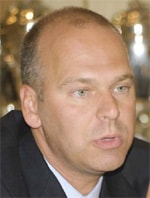 |
|
|
COOLEY
: The fastest-growing segments are the real money asset managers, as well as the hedge funds. The corporate sector also remains extremely important to the FX market. While it has not seen as rapid growth, it has been an important source of consistent and-crucially-non-correlated flow for dealers.
MCLAUGHLIN
: The corporate market is important in setting the prices in the FX market. In cross-border acquisitions and divestitures, for example, there are enormous capital flows-and these are capital flows that remain-unlike a hedge fund that might buy currency and then sell it weeks or months later. So the corporate market is very important in not only setting exchange rates, but also determining the future course of exchange rates based on the trends in both the economy and the capital flows.
JAYANTI
: The corporate market is very important. Last year during the Homeland Investment Act repatriation, for example, we saw tremendous flows in the market that really impacted the dollar’s performance over the last quarter of the year.
NICHOLS
: One potential problem could be if an event causes a sharp change in attitude about global risk and everyone wants out of these emerging market currencies at the same time. There is the question of liquidity and the volatility that would go with that as well as the largely manual back-office processes associated with a business that is inherently not scalable due to the nature of emerging market regulations that require government approvals for execution and usually require a unique and cumbersome process for settlement.
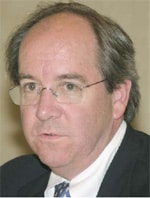 |
|
|
HULINA
: There has been a major decrease in the friction in this market. Spreads are tighter, and you can deal in smaller size. The market is much more efficient in terms of the way we distribute prices and we risk manage the flows that we see. The access of a number of end users to the market has increased dramatically over time because of this.
GF
: How should foreign exchange practitioners on the buy side and the sell side satisfy the requirement for best practices?
COOLEY
: Technology-pre-trade, trade and post-trade-has become indispensable in achieving best practice. Electronic trading facilitates control through automation and integration, and this is one of the key reasons why electronic trading has transformed the FX market over the past five years.
JAYANTI
: The FX committee is also adopting standardized third-party agreements and standardized non-deliverable forward agreements, which I think will help all of us meet best practice recommendations.
GF
: What about best execution?
NICHOLS
: Best execution is a process that involves three steps. First, a cost-benefit style assessment of the costs and the risks associated with trading. Second, establishing predefined parameters for such metrics as expected pricing, error levels and settlement fails. Third, it is a process of post-trade of monitoring and evaluation to see that pre-trade expectations were met.
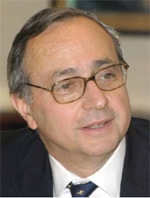 |
|
|
MCLAUGHLIN
: All things being equal, I think best execution is the lowest priced.
NICHOLS
: The best price on a trade that doesn’t settle is not best execution.
COOLEY
: Best execution is about much more than just price. It is worth bearing in mind the draft regulations in the EU have specific requirements on financial firms with regard to best execution and says institutions should have an explicit policy that explains how they intend to achieve best execution. The policy should include how the firm ranks factors such as speed, cost, execution, risk and transaction size.
HULINA
: There are a whole host of aspects to a relationship between a buyer and a seller that go beyond price. Having best execution really means forming the best and most valuable relationships in ensuring that the price that you pay is commensurate with the overall service you receive.
GF
: The amount of foreign exchange trading done online has for the first time passed 50% of total trading. How will this market develop?
NICHOLS
: Initially e-commerce was appealing because it provided an opportunity for price discovery and transparency. We have really moved from that to focusing on the automation of the pre-trade and post-trade process to create the kind of efficiency and scalability that is necessary to support this broad expansion that is under way in global investing. From here I think we extend the e-commerce techniques and capabilities into other aspects of the global securities lifecycle, such as retail level subscriptions and redemptions, for example.
ATCHUE
: Many in the asset management community who became involved on the e-platform many years ago came in purely from a mechanical side of the process. It provided a process for them that they understood about a pre-trade and post-trade. The big change in that community now is that they are looking at foreign exchange much more as an asset class. Now they are looking at foreign exchange as an opportunity.
HULINA
: Having 50% of all transactions occurring online is an impressive milestone, but we found it hasn’t kept going up to 100%. At some point you start to level off because there are certain deals that need to be dealt with in a more high-touch way. The percentage of trading done online probably will peak-or at least the growth will start to slow. What we will see is that electronic or automated methods will continue to further permeate other parts of the trade cycle.
COOLEY
: The development of electronic trading platforms is inevitably driven by requests from customers for specific enhancements. For a long time those requests have been more focused on workflow and automation, and that will continue well into the future as clients look to reduce costs and risks and increase control.
GF
: What will happen to the dollar when the Fed stops raising interest rates? And what is the market’s perception of Fed chairman Ben Bernanke?
MCLAUGHLIN
: Notwithstanding the chatter about the dollar’s imminent collapse when the Fed stops raising rates, when you look back over history, when the Fed has concluded hiking interest rates the dollar actually goes up. Regarding the foreign exchange market’s view of Mr. Bernanke, I think he is eventually going to clear up the uncertainly that exists over the future course of interest rates. He understands that the market loathes uncertainty and will be quick to make his intentions known once he gets comfortable in the position.
GARBER
: The Fed’s interest rate policy has been almost a sure bet. There has been no uncertainty in it, and the Fed has been well ahead of all the other central banks, so the interest rate spread has widened significantly between US short rates and foreign short rates. Now the Fed is probably going to stop very soon, so the certainty is now that the other central banks will probably be catching up to the Fed. Any boost the dollar has from interest rate differentials is probably going to dissipate, which will be bad for the dollar.The Fed’s statement that its decision will be driven by data outcomes has injected more uncertainty, too. That is going to add to the risk in the short end of the yield curve. That is going to add to the volatility in the foreign exchange market.
NICHOLS
: When the Fed stops raising interest rates, it will put downward pressure on the dollar as pools of capital shift in search of higher yields and the market realizes that structural imbalances can only be cured by the gradual and long-term decline in the US dollar.
MCLAUGHLIN
: The foreign exchange market is already discounting the fact that the Fed is getting close to ending its rate hikes. Therefore, the euro will continue to move higher and the dollar lower until the Fed has completed its interest rate hikes.
HULINA: The current value of the dollar already reflects interest rate differentials. That is what the forward curve is pricing. What is more relevant is whether the expectations of interest rate changes will be met. If you look back to the beginning of 2005 and the short-term interest rate curves of the euro and the dollar, there was a huge difference between what was priced at the beginning of the year and what actually happened. The expectations were that interest rate differentials between the eurozone and the dollar would be fairly narrow but turned out to be quite wide-and one of the reasons the dollar had a surprisingly strong run in 2005. Another key question is whether the carry trade will continue. There has been a tremendous amount of funding using low interest rate currencies like the yen to fund investments in higher interest currencies. If the Fed stops hiking rates and say, for example, euro interest rates start rising again, that spread will shrink, and the dollar really isn’t a carry trade any more.
Joseph Giarraputo



